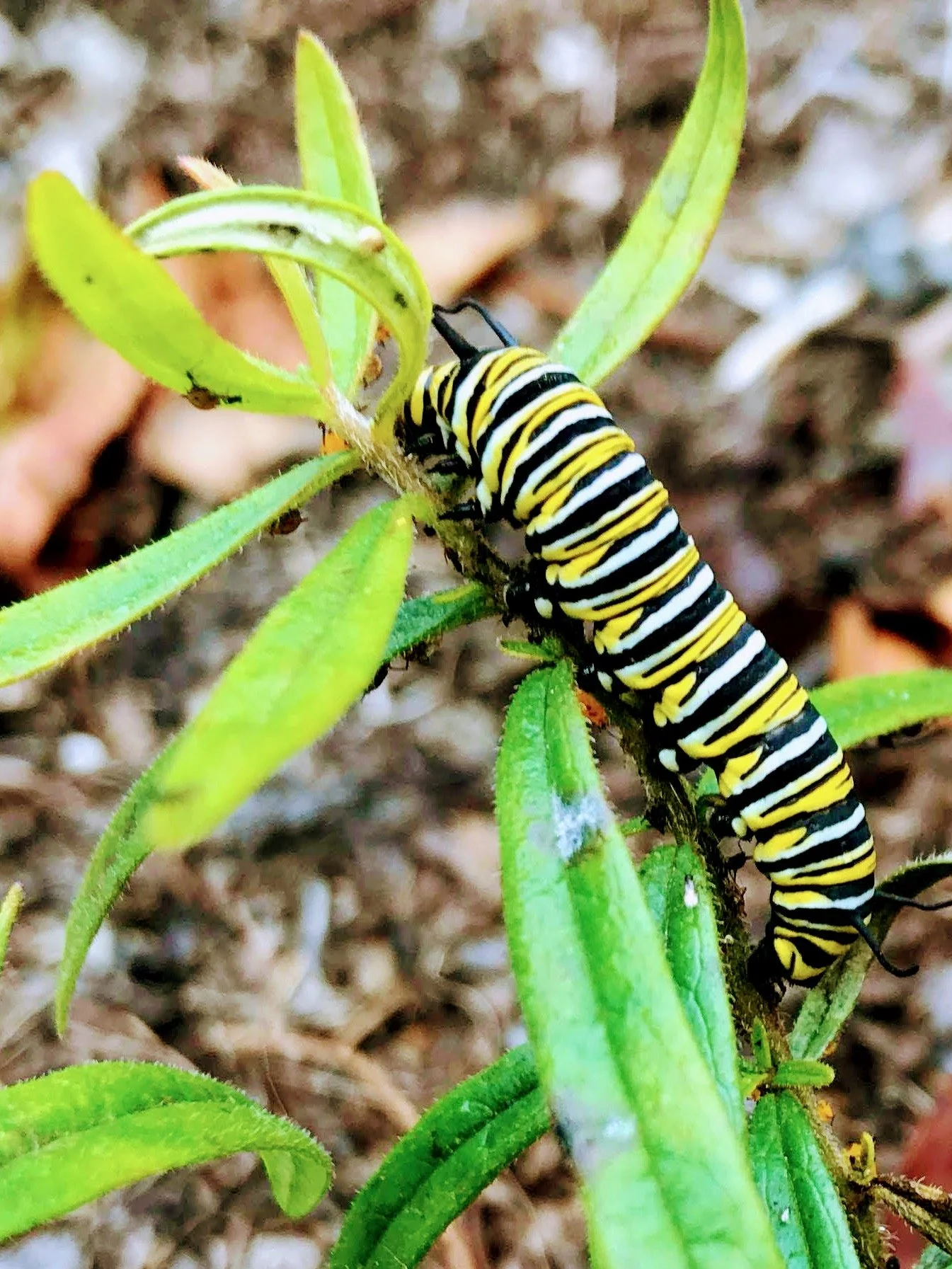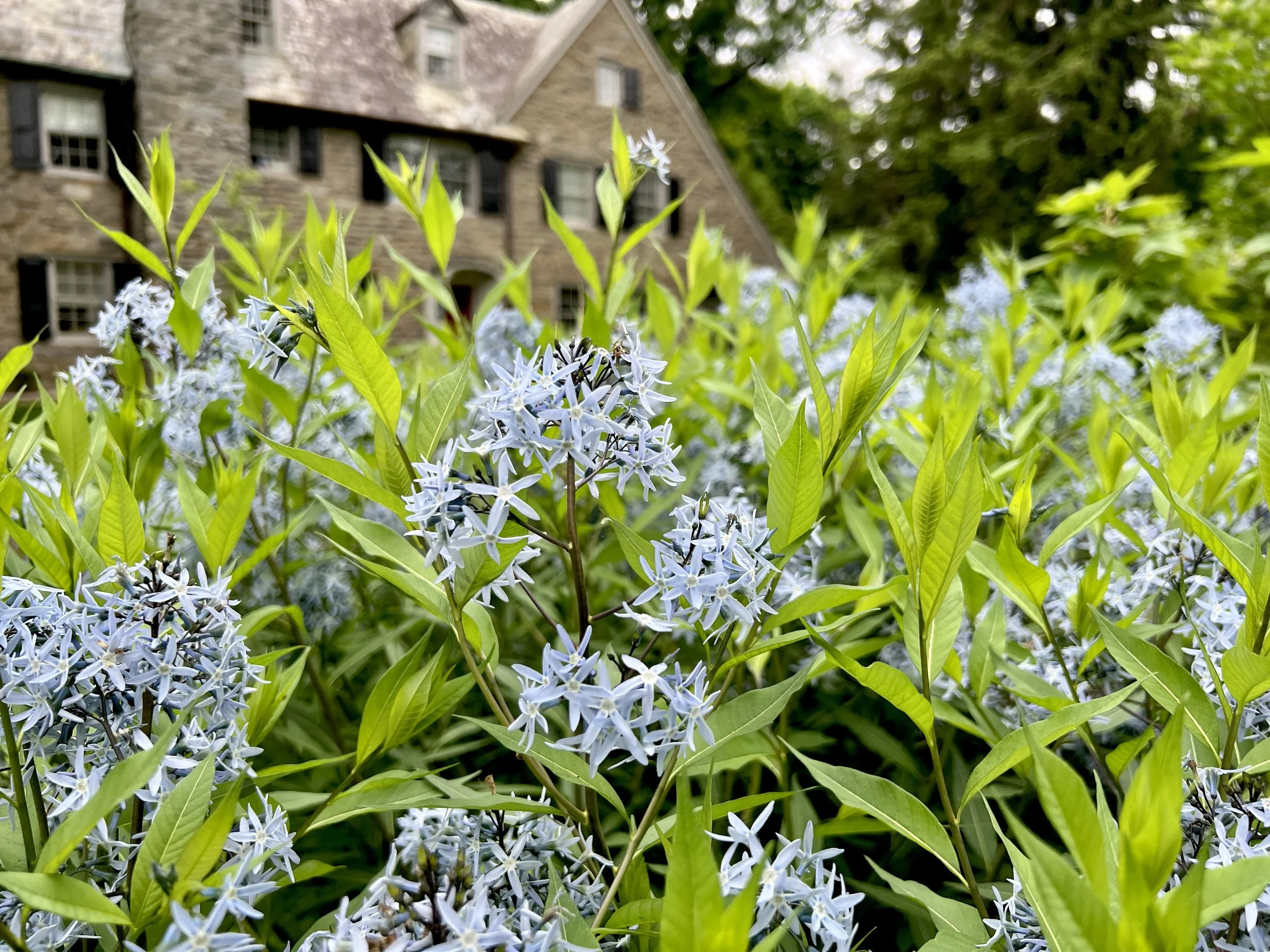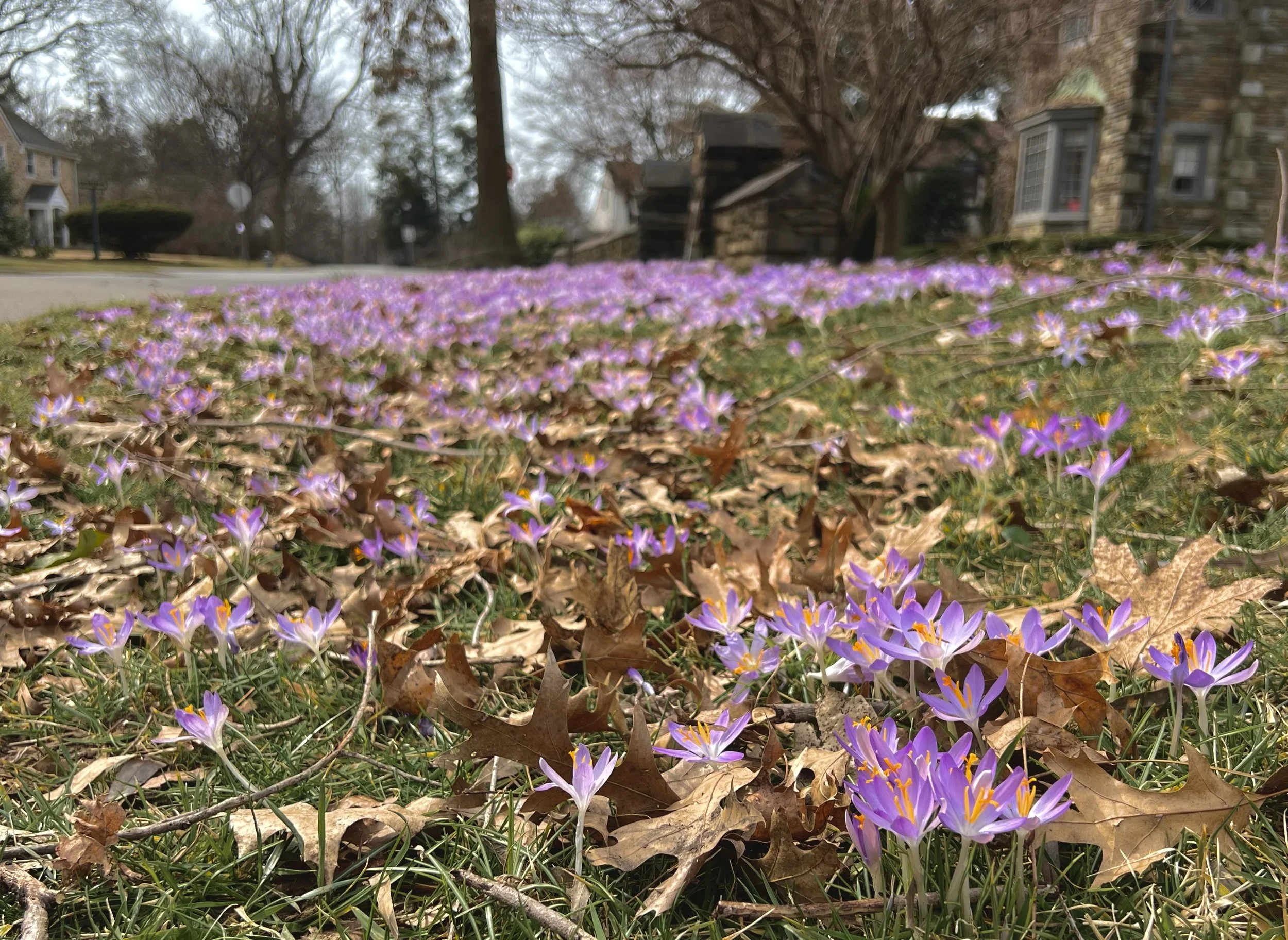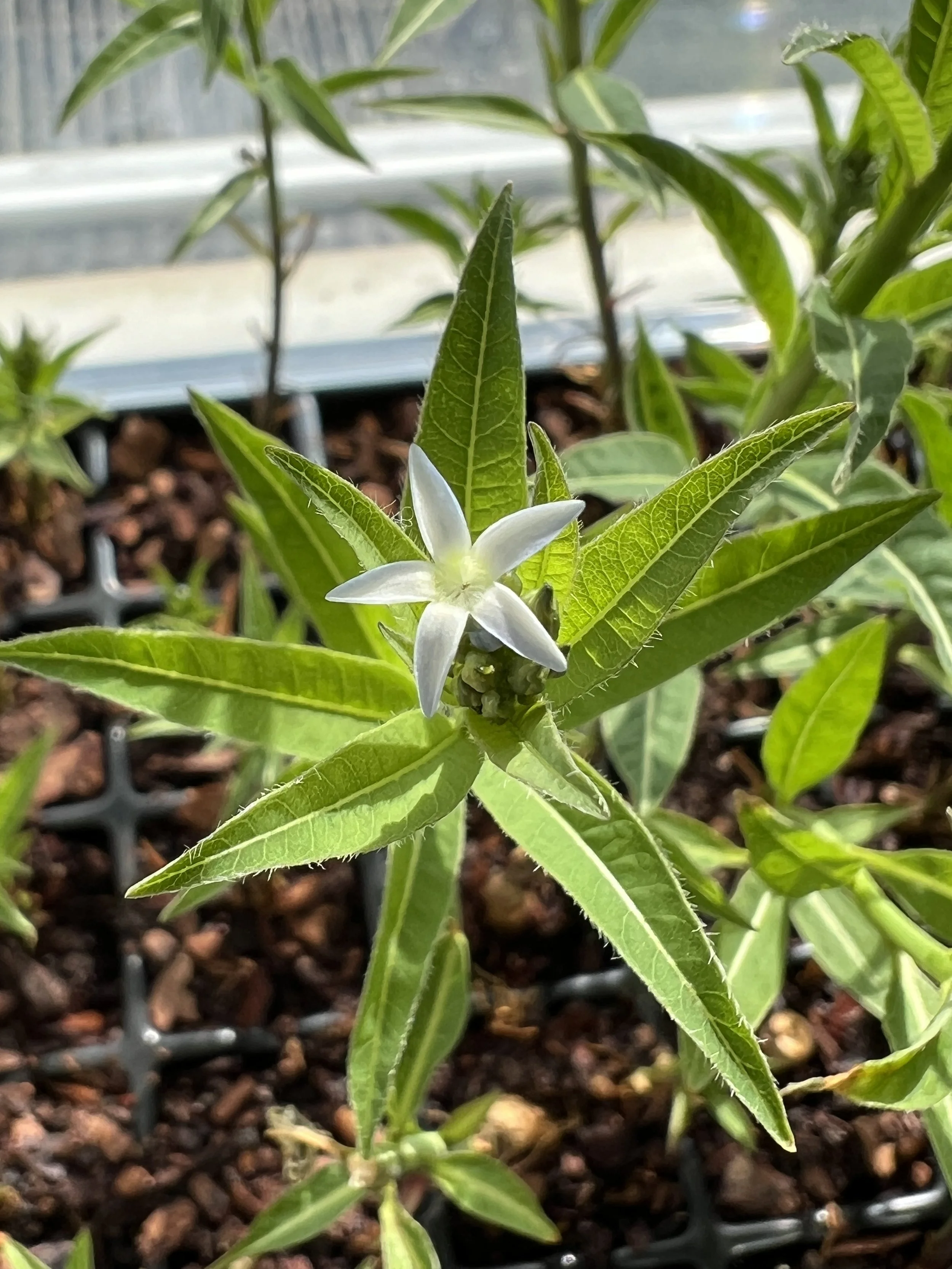thoughts from the studio and field
The following posts reflect some of our process, inspiration, and lessons learned as we design and install landscapes and watch them develop each season.
PLANNING SEASONS
Summer is for enjoying the landscape, gaining inspiration, and designing for fall installaions.
Summer is for enjoying gardens and landscapes.
The spring push for installing new landscapes and managing existing gardens for a strong growing season has passed.
There is still the regular work of weeding and watering when needed, but time in the landscape is more centered around enjoying the colors of flowers in bloom and the beauty of visiting butterflies and hummingbirds.
As a landscape designer there is a consistent sense of learning by experience. You see how plants fill in and mature, season after season, and how they manage stressors like heat and drought.
Perennials can look very different in years 2 and 3 following installation. While the flowers will be the same, their overall height and structure often don’t take full effect until they have been in the ground for at least one full growing season.
You learn by designing, planting, managing, and repeating the cycle again, gaining familiarity with the plants and the seasons.
Summer can be a fun time become excited again about planning and installing landscapes. As we move into the middle of the summer, you get the benefit of seeing landscapes in full bloom, and can imagine what a blank or underused space could be.
This beautiful home in Narberth feature a steep west-facing slope, that is being reimagined as a native landscape with low-maintenance landscape that will support wildlife and look beautiful year round.
Its fun to design right now remembering the spring perennials, enjoying the summer perennials currently in bloom like Milkweed, Rudbeckia and Phlox, and planning for the evergreen and textural plants that will offer texture and color to keep the landscape beautiful in winter.
Looking forward to seeing the current round of summer de
Summer growth
Blazing Star and White Gaura in bloom during the summer. Two outstanding native perennials for the low maintenance landscape.
Summer is here.
After a hot start to July, the last week has been a nice break in temperature with the occasional shower to help plants along.
The pressure of finishing up any remaining installation work that has carried over from spring is contrasted with the peace of seeing established landscapes that are thriving. Landscapes that were planted in previous years have been able to establish strong roots and have no problem with the heat of summer.
Liatris of Blazing Star is one of my favorite summer perennials. The flowers are gorgeous spikes of pink-purple and the individuals blooms have a shaggy texture. I really like the way they combine with Amsonia and its fluffy chartreuse texture, White Gaura with its airy stems, and the yellow dots of Rudbeckia.
The clusters of flowers start blooming from the top and then work their way down. They leave tons of seed on the stalks as they dry out which birds enjoy and the wind also spreads throughout the landscape.
Their showy blooms make an impact in summer and then fade until returning the next season. It’s nice to catch them in bloom and appreciate them during their season, before other plants come to the forefront.
If you are driving between Wayne and Villanova on Parkes Run Lane in early summer, you might notice this fenceline planting in bloom.
Gardening for Wildlife
Gardening for wildlife takes many forms. We design landscapes with an emphasis on beauty and supporting wildlife in all seasons.
There are lots of different names for plantings intended to support wildlife.
Wildlife gardens, Habitat Gardens, Native Landscapes, Ecological Restoration projects, Pollinator gardens…
It’s good to keep the end goal in mind when designing any landscape.
There is definitely a place for designed spaces that emphasize native plants grown from local ecotype seeds with the goal being to preserve local plant genetics and support a wide variety of wildlife.
The other end of the spectrum includes landscapes designed primarily as a backdrop for social spaces and functions, with beautiful aesthetics throughout the year being the target.
Both have their place and I’m in support of nearly any landscape that invites people to spend time outside. Whether in a group setting in an urban/suburban park, or getting some alone time in an ecologically restored landscape, time outside in nature is always a good investment.
Right now, my design emphasis is in the middle of the two extremes. Before working as a landscape designer, I was as a gardener tending to fine estates in the suburban Philadelphia Main Line area. I learned the cycle of planting annuals in pots and in the ground for each season, mulching, pruning, staking, deadheading spent flowers, and cutting everything to the ground in autumn.
When I began working as a designer, I was 100 percent committed to creating landscapes only with native plants, including plants I had grown out from locally collected seeds.
I went from one extreme as a gardener striving to keep compositions of exotic plants looking perfectly maintained to valuing a collection of plants of local provenance as the best expression of a landscape.
In recent years, I have found an appreciation for a balanced approach between the two ends of the spectrum.
It’s hard to ignore feeling connected to native plant landscapes that are visited by butterflies,, hummingbirds, turtles, and other wildlife, all while showing the beautiful changes that occur throughout the seasons. Doug Tallamy’s work explains the layers of significance these landscapes of native plants provide for local ecology.
It’s also hard to ignore the beauty of a well-designed landscape focused on plant combinations that emphasize contrasting forms, colors and textures. Piet Oudolf has been the most significant landscape designer I have studied in this regard. Studying the form of plants and how they exist without excessive pruning, deadheading and other maintenance has been a major takeaway for me from Piet’s work.
In 2024, I am designing primarily with native plants while also appreciating the beauty that some of our non-native, conventional landscape plants can provide. Realistically, this is a few species that most people have become familiar with over the past few decades of gardening and have proven to be well behaved in the landscape. Nepeta, Salvia, Stachys, Agastache and Perovskia are the species that come to mind as elements of recent landscapes. They have a role in providing long-bloom times and filling in gaps between native species blooming. I still prefer native plants and start all of my landscape with Ilex, Cornus, Viburnum, Amsonia, Phlox, Solidago, Rudbeckia, Penstemon, Panicum, Asters and especially Asclepias species when I can.
Whatever the landscape and composition of native to non-native plants, there is a magical feeling of seeing a Butterfly Milkweed supporting monarch butterflies as eggs, caterpillars, and adults enjoying the leaves and bright orange flowers.
Spring layers
‘Grande’ Bluestar Amsonia is a gorgeous native perennial. It is low-maintenance, deer-resistance and blooms in spring. Even after the flowers have bloomed, the lush foliage looks elegant and pairs perfectly with grasses and other flowering perennials.
The progression of the seasons is beautiful. Spring erupts with all of the fun bulbs we know well. Daffodils, tulips, hyacinths, and crocuses are all beautiful.
The native forest perennials like bluebells, tiarella, iris, and phlox have delicate flowers that peak early in the season as the trees begin to leaf out.
Amsonia is an outstanding perennial for the full-sun landscape. The beautiful stems lead to gorgeous light blue flowers that stay for weeks at a time. My favorite variety is Amsonia tabernamontana ‘Grande’.
The foliage is a beautiful glossy green and the flowers are larger that the species. It always surprises me how lush and full it is during the early part of the season and it fills in a really nice window before the summer pernnials are in bloom.
This landscape on Sabine Road in Wynnewood is several years old and continuing to mature. The Amsonia planted there looks gorgeous right now.
Crocuses in Bloom
A beautiful shimmer of purple covering this Bala Cynwyd lawn.
Crocuses blooming in this Bala Cynwyd lawn are absolutely eye-catching.
I never really noticed this lawn or landscape before. It was mostly just a house on a street that I would pass by on my day-to-day driving. These crocuses literally stopped me in my tracks. The time between seeing them from my truck, pulling over, parking, and getting out to take some photos was less than a minute.
That seems reflective of what crocuses do in the landscape. They catch your eye quickly. They bloom in a beautiful flash, or in spurts based on the weather. Some years they feel perfectly aligned with gorgeous spring weather; other years they are fighting it out with snow.
As a designer focusing on low-maintenance landscapes and native plants, these crocuses brought up some new ideas for me.
What role could smaller, early-season bulbs play in the landscape?
Could they be used to add a new dynamic to lawn areas in spring, framing pathways or views of the home?
How could they blur the lines between lawn and planted areas?
Whatever the shifting weather offers each spring, crocuses provide the potential for a beautiful flash of color weeks before hyacinths, daffodils and tulips emerge.
They are beautiful and worth considering in landscape designs.
Roots to Flowers in 6 weeks
Amsonia are some of my favorite native perennials. Amsonia hubrechtii is the most commonly seen species along the Main Line and it is primarily grown for its fine leaves that take on a shaggy yellow appearance at the end of the season and look awesome paired with grasses.
‘Grande’ is an incredible selection of another species called Amsonia tabernamontani. It has broad leaves and beautiful clusters of blue flowers from late April through May. The foliage adds an elegant green texture to the landscape once flowers have faded.
Grande isn’t the easiest selection to find, so I gathered 2 clumps from a generous client in Villanova in December and now have 40 plugs and dozens of larger plants ready for potting and planting this spring.
Working with the plants used in landscape designs from roots to flowers keeps you connected to how the plants develop over time and function in the field.
There are beautiful varieties of native plants that have been carefully tested and selected and can be used in a garden setting to support wildlife and provide a beautiful aesthetic without looking out of control. Many, like this Amsonia have drought and deer resistant qualities that are hard to beat in addition to the gorgeous flowers.
Looking forward to bringing these perennials back out into the landscape as part of several new designs in just a few weeks.
Amsonia are some of my favorite native perennials.
Amsonia hubrechtii is the most commonly seen species along the Main Line. It is primarily grown for its fine leaves that take on a yellow shaggy appearance at the end of the season and look awesome paired with grasses.
‘Grande’ is an incredible selection of another species called Amsonia tabernamontani. It has broad leaves and beautiful clusters of blue flowers from late April through May. The foliage adds an elegant green texture to the landscape once flowers have faded.
’Grande’ isn’t the easiest selection to find, so I gathered 2 clumps from a generous client in Villanova in December and now have 40 plugs and dozens of larger plants ready for potting and planting this spring.
Working with the plants used in landscape designs from roots to flowers keeps you connected and growing in your understanding of how the plants develop over time and function in the field.
There are beautiful varieties of native plants that have been carefully tested and selected and can be used in a garden setting to support wildlife and provide a beautiful aesthetic without looking out of control. Many, like this Amsonia have drought and deer resistant qualities that are hard to beat in addition to the gorgeous flowers. The beautiful flowers, lush foliage and deer-resistance make them a versatile perennial that fits in to a city garden in Philadelphia, a formal on the Main Line, a naturalistic Chester County planting, or a coastal garden at the shore.
We are looking forward to bringing these perennials out into the landscape with several new designs in just a few weeks.
Designing with Evergreens
Evergreens play an important role in the designed landscape. They provide year-round screening and privacy and also structure the landscape in winter. Beyond just being functional, species like Southern Magnolia have beautiful fragrant spring flowers. Available in a variety of selections from full-sized to dwarf species, Southern Magnolias are a great evergreen tree to consider planting.
Evergreens play an important role in the designed landscape.
They provide year-round screening and privacy and also maintain the structure of the landscape design in winter. Species like Southern Magnolia expand the framework for evergreens with their beautiful white flowers that have a lemon-soapy fragrance as they bloom in late spring.
There are varieties of Southern Magnolias ranging from full-sized trees that are 40-60 feet tall down to dwarf species in the 16-20 foot tall range.
One of the beautiful elements of all Southern Magnolias is their thick glossy foliage which have velvety brown undersides. The leaves are attractive year round and have a beautiful depth to them, making them stand out as individual plants and when grouped together.
They do well when planted in spring and get an entire growing season to establish before winter and you get to enjoy the flowers. If you have a spot in your landscape that could use some evergreen screens that can also serve as a focal point, consider in a Southern Magnolia might be a good addition this season.
Meadows in winter
Meadows in Winter
How do you design a meadow with native grasses and perennial wildflowers and establish it successfully? Wont it look tall or wild? How often will I have to reseed it? If I just stop mowing the lawn, wont it turn into a beautiful meadow? Can I just sprinkle some seeds over my existing lawn?
There are a lot of questions when it comes to meadows.
Transitioning a portion of your property into a meadow takes understanding, planning and management. Understanding your site now and as it was used in the past will give you a foundation for the conditions that exist like sun and shade, moisture, and weed pressure. Planning your landscape with species that match the different conditions sets up a meadow that will successfully establish and thrive in your unique space. Installing and managing the meadow over the first few seasons enables you to control problems as the arise and before they grow larger.
At a site visit in Glen Mills PA yesterday, I was consulting the homeowner on the state of his existing meadow installed by a contractor several seasons ago. We discussed the challenges that were present with weed pressure, and the difference between what he expected and how the meadow actually looked after several seasons.
There was a good covering of Little Bluestem, which is an excellent warm-season, native grass that comes back each year. It grows 2-3 feet tall and looks awesome during the growing season and after it has dried out and stays standing in winter. Little Bluestem provide stems for insects to place eggs, seeds for birds to eat, and cover for smaller animals to inhabit.
One of the disappointments for the homeowner was the lack of flowering perennials. When the meadow was seeded several years ago in summer it was followed by several weeks of drought conditions. Adding sprinkler and timed irrigation had enabled many of the seeded species to germinate on the bare soil, but also did the same for the weed species. During the following seasons, weeds were managed by hand removal and areas that had become badly disturbed were reseeded. The homeowner mentioned that he had seen a handful of flowering perennials over the course of 3 years, but it was not what he envisioned. he anticipated the meadow being filled with bright flowers throughout much of the year, matching the picture from the seed mix.
Several weeks ago, the meadow was cut, aerated and seeded again.
The disturbance of weeding and exposing soil created a cycle of bringing buried seeds up to the surface, both desirable native species and undesirable weed species, exposing both to sunlight and encouraging germination. We discussed needing to change the cycle to allow the seeded meadow plants to establish, while controlling the weeds without creating more disruption. Unlike a vegetable garden with soil that is tilled and annual plants that are grown and then cleared every year, a meadow needs to establish over seasons, promoting the beneficial native plants, while being managed to control and outcompete the undesirable weed species.
We developed a plan for several site visits this spring and summer to implement targeted weed control and monitoring to encourage the native meadow species. As we examined the meadow up close, we noticed some tiny Black eyed Susan (Rudbeckia hirta), Lanceleaf Coreopsis (Coreopsis lanceolata) and Eastern Beardtongue (Penstemon digitalis) seedlings scattered throughout. They looked like they had been waiting for their turn to emerge with the rest of the meadow, establish flowers, and set seed.
The plan for this season is to manage and encourage this designed meadow to work beautifully as it springs into new growth, blooms in summer and fall, and maintains its aesthetic as an attractive designed meadow in winter.
Why design a landscape?
When does it make sense to step back and plan your landscape as a complement to the rest of your home?
Designing a landscape can be intimidating.
Typically when a house is purchased there is “a bit” of renovation work to bring it from its previous use and condition to the home you are envisioning. Functional elements like the roof, windows, kitchens and bathrooms need to work and also provide beautiful spaces for the tasks of everyday living. By the time repairs and renovations are complete, It can take a few years to have the energy to begin imagining what the landscape could be.
While it can be overwhelming approach a new project thinking through the variables and details of the landscape, working with a designer to develop a plan can help put things into perspective. Starting with a zoomed out approach and developing a concept for the way your entire property functions, you can build the design in phases so that it matches your dream outdoor space and the way you use your home everyday.
Beginning with questions about how guests arrive and move around your property, which views are most important to preserve, any areas are important to screen and seasons of heightened use and activity for the landscape all contribute to a thorough plan for what your landscape can become. With a plan in place, installation can be budgeted and phased to begin developing your dream landscape.
Sometimes the busyness of getting out the door and from one activity to another can create weeks and seasons and years where the landscape goes by without being noticed. Hiring a designer can be one approach to developing the outdoor spaces of your home so they can be enjoyed in any capacity, in spring, summer, fall and winter.










